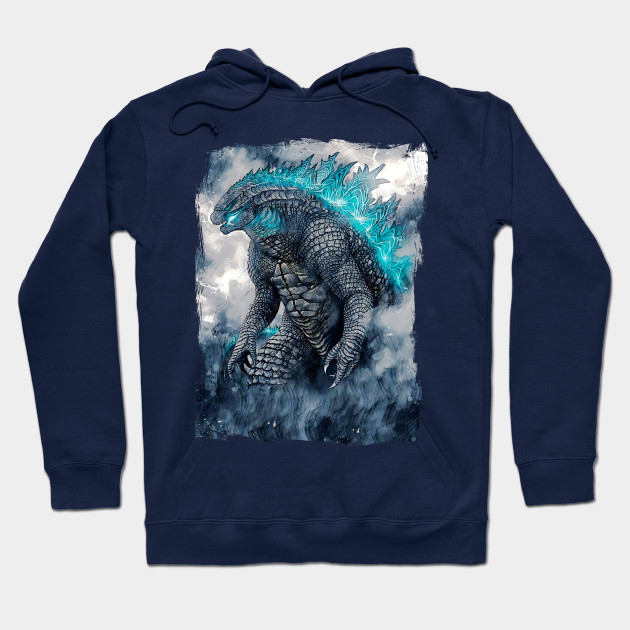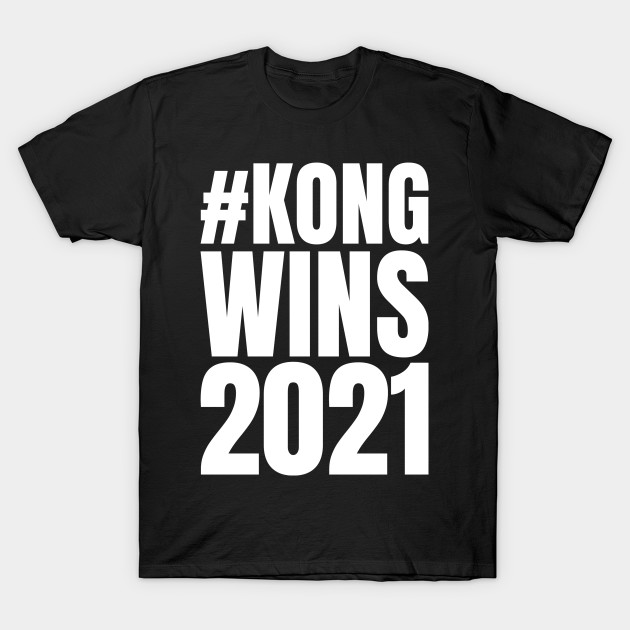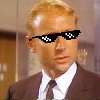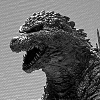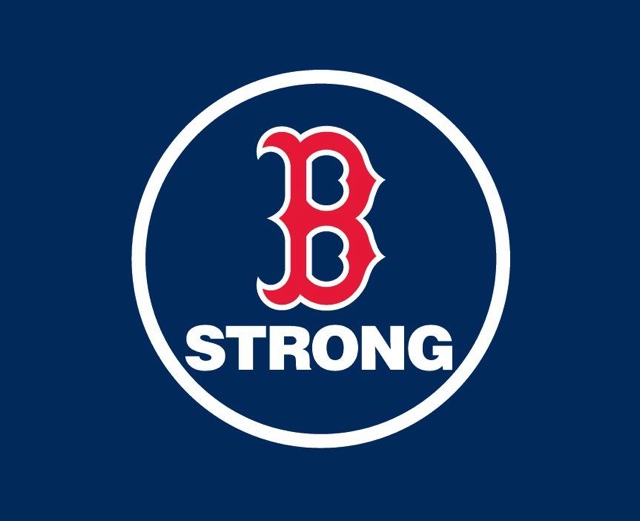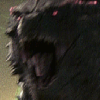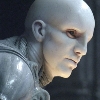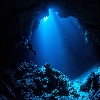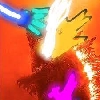“The Return of Godzilla” is a 1984 Japanese tokusatsu film produced by Toho Studios and directed by the late, Koji Hashimoto. [1] It is the 16th installment in the Godzilla series as well as the first "Heisei" (or "Versus era") Godzilla movie. The film decided to take a new, but familiar approach to the franchise by rebooting the Godzilla series and returning tonally to the original film’s roots. The Return of Godzilla stands as an important piece in the long and varied history of the King of the Monsters.

Coming off of the heels of 1975’s “Terror of Mechagodzilla”, Toho producer Tomoyuki Tanaka was not satisfied with this being the seeming end of the Godzilla film franchise and was quick to invest in efforts to bring the character back to the big screen starting as early as 1976. Many different ideas and projects were thrown around and scrapped around this time; One notable project was a collaboration between Toho and UPA Productions, with a film that was to pit Godzilla against a Gargantua. [2] Other canceled or unmade projects of this period include a 1977 colorization project of the 1954 Godzilla film called “The Rebirth of Godzilla”, Godzilla Legend: The Asuka Fortress, and most bizarre of all was “A Space Godzilla” (no relation to the film “Godzilla vs. SpaceGodzilla”) that was eventually published as a two-part story in the Japanese edition of Starlog magazine in the year 1979. [3]
In 1980, Tomoyuki Tanaka worked together with writer Akira Murao for a new film proposal, titled “Resurrection of Godzilla.” This pitched script is most infamous for being the first time the kaiju ‘Bagan’ (called ‘Bakan’ in this script) was proposed to be in a Toho movie. [4] A shape-shifting monster that would have gone through three different forms called the “Water God Beast”, “Monkey God Beast” and “Dragon God Beast.” This script also featured the giant sea louse Shockirus—that appeared in the final film—as well as a carnivorous plant. The film was to follow a news-agency photographer named Shinpei Muraki, whom would have worked with Atomic physicist Masao Inamura and his daughter Akiko to prove the existence of a pterosaur-like monster Maki saw (later revealed to be Bagan) and to understand a variety of strange events that had been happening around Mount Ontake. Tomoyuki Tanaka, who had lamented Godzilla’s transformation from a symbol of the atomic bomb to becoming a superhero appealing towards kids wanted the next film in the series to feature the return to the anti-nuclear approach featured in the 1954 film. Thus, this script introduces Godzilla with him being awoken by illegal nuclear dumping, introducing the idea of Godzilla feeding on radiation. After Godzilla eventually fights and kills Bagan, the film would shift its focus to the dilemma of using a method of nuclear fusion, newly discovered by Dr. Inamura, to create a weapon that would use a military satellite named ‘Red Bird.’ The satellite would shoot a laser causing an explosion that would turn Godzilla into a giant nucleus and trigger a nuclear fusion within Godzilla’s body and somehow kill him. Inamura only accepts the job after Akiko is nearly killed by a now rampaging Godzilla. Upon completion, the Japanese military lure Godzilla into a target zone and fire the weapon, causing an explosion reminiscent of the Hiroshima bombing that inspired Godzilla, as well as having been responsible for the death of Mr. Inamura’s wife. Despite the impact of the weapon Godzilla is revealed to survive this and the point is made that as long as there are nuclear weapons are on the Earth, Godzilla will live, and Godzilla will reign. [4]
2 years after this proposal, little further progress had been made on a new Godzilla movie. However that same year, screenings of Toho movies such as Godzilla, Rodan, and Mothra for the company’s 50th anniversary ended up performing greater than anticipated (despite having been played alongside some Disney classics). [5] Renewed interest in the franchise by general audiences and fans alike got the wheels spinning once again. In 1983, Tomoyuki Tanaka got writer Hideichi Nagahara—who had been previously tasked in 1978 by the producer to mine ideas from the “Bride of Godzilla?” script [3] —to revise the story Tanaka and Murao had up with. Although the 1983 revision was scrapped, Hideichi Nagahara did wind up writing the script that was used for the complete film and many elements from “Resurrection of Godzilla” were carried over (along with elements from another scrapped project called "Godzilla, King of the Monsters in 3D" written by Fred Dekker).

By 1984 production had finally started on the film, and it had already been announced to the public by veteran Godzilla series actor Akihiko Hirata (known for his role as Daisuke Serizawa and many other characters in the franchise). [6] The cast of actors that starred in the film would include late Toho actor Keiju Kobayashi as Japanese Prime Minister Mitamura. Ken Taka plays the film’s protagonist: reporter Goro Maki. Yasuko Sawaguchi as Naoko Okumura – a role which won the young actress a “Newcomer of the year award” at the 9th Japan Academy Awards. [1] Naoko’s brother Hiroshi is played by Shin Takuma. Finally, there is also the character of Dr. Hayashida. Hayashida was originally going to be played by the previously mentioned Akihiko Hirata, however, due to health complications (and later his unfortunate passing from lung cancer) that occurred before filming began he was soon replaced by Yosuke Natsuki. With a budget of 640,000,00 yen (approximately $6 million), Tomoyuki Tanaka had first requested for Ishiro Honda to helm directing duties of the film, however, after declining the director role was placed upon Koji Hashimoto. [5] Return of Godzilla would be his second lead director role, following Bye-Bye Jupiter.
Special Effects in The Return of Godzilla were handled by Teruyoshi Nakano. This was his own personal favorite of all the Godzilla films he directed the special effects for. [7] A large proportion of the film’s budget went to Nakano’s team for the special effects. The miniatures alone brought the film’s original intended budget (which was around about $5 million) up by roughly 25% - 80 million yen was spent on the Nuclear power-plant set, while 130 million yen was spent on the miniatures for Shinjuku. [5] Construction of said miniatures took a total of 8 months from the combined efforts of 160 employees. [2] Teruyoshi Nakano was determined to show as many small and realistic details as he could within the film, going so far as to have all the lights within the windows of buildings to look different simply because “there’s no building in real life that has identical lighting in every room." [8] Despite the mass amounts of yen spent, a downscale from 1/25 scale to 1/40 scale caused the miniatures to lose many of the small details present in the previous films. [2] The reason for this was because of the film’s new, 80 meter tall, Godzilla.

Upon reflection, Tanaka has stated his regrets on the character change of Godzilla becoming a heroic monster, citing it as a reason for the franchise’s decline. Thus when Gigan and Megalon designer; Noboyuki Yasumaru designed the new Godzilla, the design was given a much more menacing look that was reminiscent of the original. [5] Even bringing back the ears and fourth toes that had not appeared since Godzilla Raids Again in 1955. Other details such as sloping shoulders were also put into the design to give Godzilla the look of a lonely and sorrowful creature. To bring Godzilla to life: two suits, a tail prop (made from the suits’ mold), a life-sized; crane-operated, foot prop, and the infamous ‘cybot’ were all constructed to portray the monster. The film’s main suit had been constructed early in the year, weighing approximately 242 pounds and having been designed for actor Hiroshi Yamawaki. However, when Yamawaki suddenly declined the role, Gigan and Hedorah suit actor: Kenpachiro Satsuma was promoted to playing Godzilla instead. During an interview in 1995, Satsuma stated “It was hell to act in” when referencing playing Godzilla within the 1984 film. [9] Despite being in peak physical condition, the suit actor could only withstand around 10 minutes in the costume at a time. He feared for his life on many occasions, almost certainly made even more distressing by the system of pneumatic tubes and electronics inside the costume that controlled the eyes and mouth. On a similar note, Nakano’s precious 5-meter tall cybot. Around $475,000 was spent to build the cybot. Despite only appearing in the film for close-up shots of Godzilla, Toho boasted that the cybot would appear in 70% of the special effects sequences. It soon became a useful marketing device for Toho to promote the film to various media outlets and the Japanese public. [5]
After filming had been completed, editing was put into the hands of the proficient Toho film editor: Yoshitami Kuroiwa. Finally, there was the musical score of the film. Originally, the revered Akira Ifukube was approached to score the film. He was unfortunately unavailable at the time, so instead, composer Reijiro Koroku was contracted to compose the film’s music. Koroku claims to have written the score in just four days and used acoustic instruments in preference of synthesizers. Having believed that they better complemented the living, breathing creature Godzilla was. [6]
Of course, The Return of Godzilla’s infamous American re-edit titled: “Godzilla 1985” cannot be ignored in this retrospective. The project was helmed by independent film distributor New World Pictures, who licensed the film from Toho for $500,000 and spent $200,000 on changes made to the film; including newly filmed scenes. [6] The company felt that the original Japanese film was too concerned with having anti-nuclear themes and was also too talky. They believed that stressing the campiness of the film would be the best way to sell Godzilla to the American public. Editor Michael Spence was told to make the film to play out like a genre picture, as well as to emphasize the action. Two scriptwriters were hired for this edit. Lisa Tomei wrote the script (as well as assisting with ADR and dubbing) that was used for the dubbed Japanese footage and made changes, while Straw Weisman wrote the new insert American scenes. [2][10] Rumor has it that the 1985 edit of the film was intended to dive headfirst into comedy/parody. Even going so far as to attempt casting Leslie Nielsen. However, in an interview conducted by Brett Homenick, Godzilla 1985 producer Tony Randel has denied both claims, stating "No, no. In fact, anybody that knows me (knows that) I love parody, but I don't do parody. So that's just absolutely not true." [11]
Soon enough, a New World executive (Jeff Schechtman) negotiated a deal that got Raymond Burr involved in the project to reprise his role as Steve Martin. [11] Burr was very adamant to take Godzilla very seriously. When he met with the director of the American scenes—R.J. Kizer – he immediately stated, “Godzilla is an allegory for the dilemma and madness of nuclear bombs in this world, and that is not something I will laugh at.” Kizer simply responded, “Yes sir!” [12] From this point, some of the tongue-in-cheekiness of the script was toned down, with Raymond Burr suggesting changes and even rewriting some of his own lines for the film. When it came time to film, Godzilla 1985 was shot over the course of three days. Raymond Burr was present for just one of those days. Soon enough, the new scenes were spliced in with the re-edited Japanese scenes. One thing that this edit of the film is known for is the changes to the roles of Russians to being portrayed as the villains. Many have understandably interpreted this change as propaganda. However according to Randel, "That was a complete joke I did." [11] Finally, supervising sound editor Bob Briggert recut and shifted the placement and usage of Reijiro Koroku’s score. Briggert also added in (pirated) music tracks from Christoper Young’s score for the film Def-Con 4.

December 15th of 1984, “Gojira” (known in the West as The Return of Godzilla) was released to Japanese theaters. While the American re-edit would soon hit American theaters more than 6 months later on August 23, 1985. Despite running alongside various Hollywood movies such as Gremlins and Ghostbusters, The Return of Godzilla was rather successful in its home country. Within its first week, The Return of Godzilla drew in approximately 800,000 viewers across 234 theaters. [5] It ended up being the second highest-grossing Japanese-produced film of the year. Bringing in around 1.7 billion yen and the overall Japanese attendance was about 3,200,000. The highest attended Godzilla film since Ebirah: Horror of the Deep (which received 4,210,000 in attendance). In contrast, Godzilla 1985 did rather poorly during its 131-day theatrical run. Earning only $509,502 during its opening weekend and overall earning $4,116,395 total. [13] In terms of critical reception, Godzilla 1985 was also disappointed many. Among the many negative reviews, acclaimed film critic Roger Ebert infamously gave the film just a single star. [14] In contrast, Japanese audiences watching the original version of the film praised the movie’s efforts to stay close to the original. [13] Although some producers at Toho were less than happy with the lack of an opponent for Godzilla.

Within the overall scope of pop-culture, 1984’s The Return of Godzilla seems to have lacked any sort of major impact. Especially when compared to other films in the franchise such as the original 1954 film or 1973’s Godzilla vs. Megalon. However, within the franchise itself, Godzilla 1984 laid the foundations for the up and coming Heisei or Versus series of Godzilla movies. Godzilla 1984 also introduced many things in the franchise that would be revisited many times within the franchise. Early scripts with Bagan were the introduction to a character that has been brought onto and scrapped from projects all the way up to the Godzilla: Monster Apocalypse book from 2017 [16]. The film’s ‘Super X’ machine ended up getting revised in sequels with the Super X2 and Super X3 along with other superweapons like the Argo. Finally, the film also started the trend in (soft) rebooting the franchise, which has repeatedly occurred many times since. After having examined the history of this entry, and the impact it had, makes The Return of Godzilla one of many points that set the groundwork for and evolved the franchise for the future. For all of its ups and downs.
References:
[1] Wikizilla
[2] Japan's Favorite Mon-Star: The Unauthorized Biography of "The Big G" - Steve Ryfle
[3] The Big Book of Japanese Giant Monster Movies: The Lost Films Mutated Edition - John LeMay
[4] Toho Kingdom - Tanka's Proposal: Resurrection of Godzilla Story Translation
[5] A Critical History and Filmography of Toho's Godzilla Series 2nd Edition - David Kalat
[6] Toho Kingdom - The Return of Godzilla
[7] David Milner: Kaiju Conversations - Teruyoshi Nakano Interview
[8] SciFi JAPAN TV#36 - EXTRA: The Return of Godzilla 30th
[10] Vantage Point Interviews - REWRITING GODZILLA! Lisa Tomei on Americanizing Godzilla 1985
[12] G-FAN Magazine #82
[13] Box Office Mojo - Godzilla 1985
[14] Roger Ebert - Godzilla 1985
[15] Kaiju Battle - The Return of Godzilla
[16] Tokusatsu Hiho Volume 8
Special Thanks to Elijah Thomas
Discuss this news and other Godzilla & Monsterverse topics in our Godzilla Forums- a dedicated community of Godzilla fans built by fans for fans!
Want to chat about Godzilla x Kong: The New Empire? Join thousands of other Godzilla fans in the Godzilla x Kong online forums here! You can click here to start your own discussion!
Browse images from the upcoming Godzilla vs. Kong sequel here as well as images from Apple TV’s Monarch: Legacy of Monsters and Toho’s Godzilla Minus One.
Stay up to date with the latest news on all things Godzilla, Toho and the Monsterverse also by liking us on Facebook and by following us on Twitter and Instagram! Also, consider subscribing your email to our blog for instant notifications of when new posts are made!
Get G-ed Up!
Represent your favorite Godzilla monsters with custom Godzilla clothing and merchandise! Click here for even more options!






